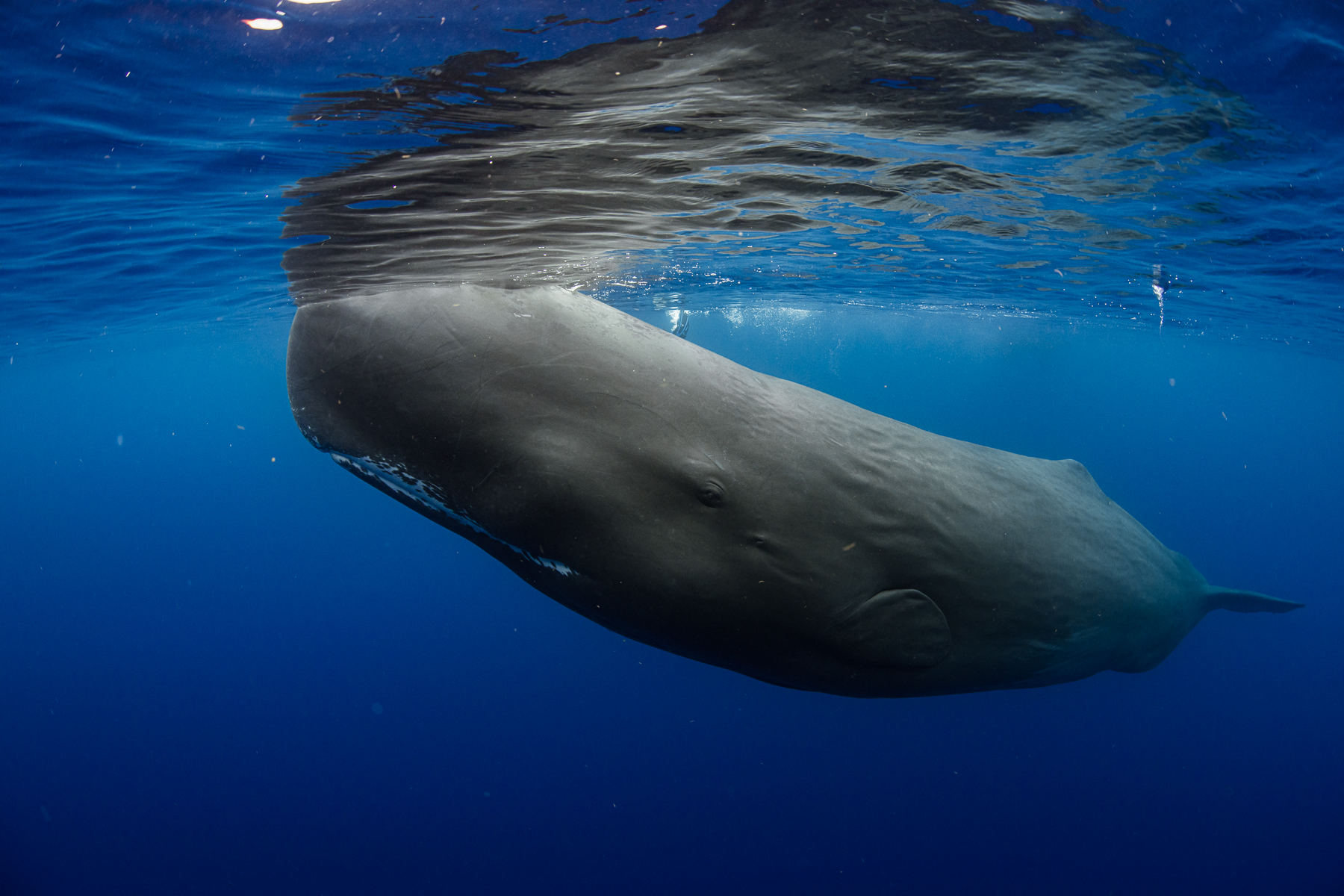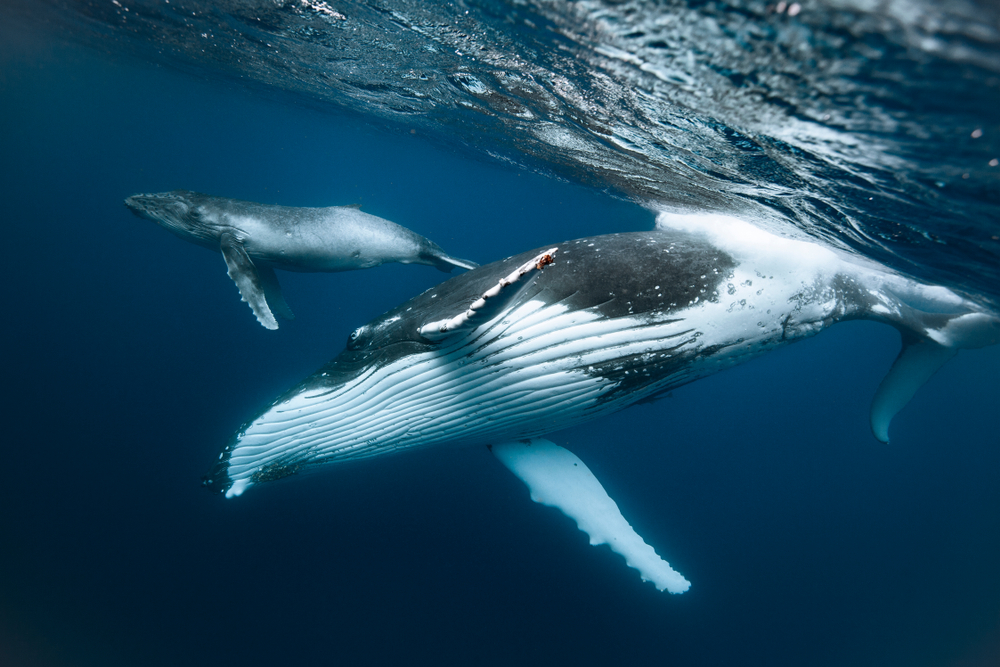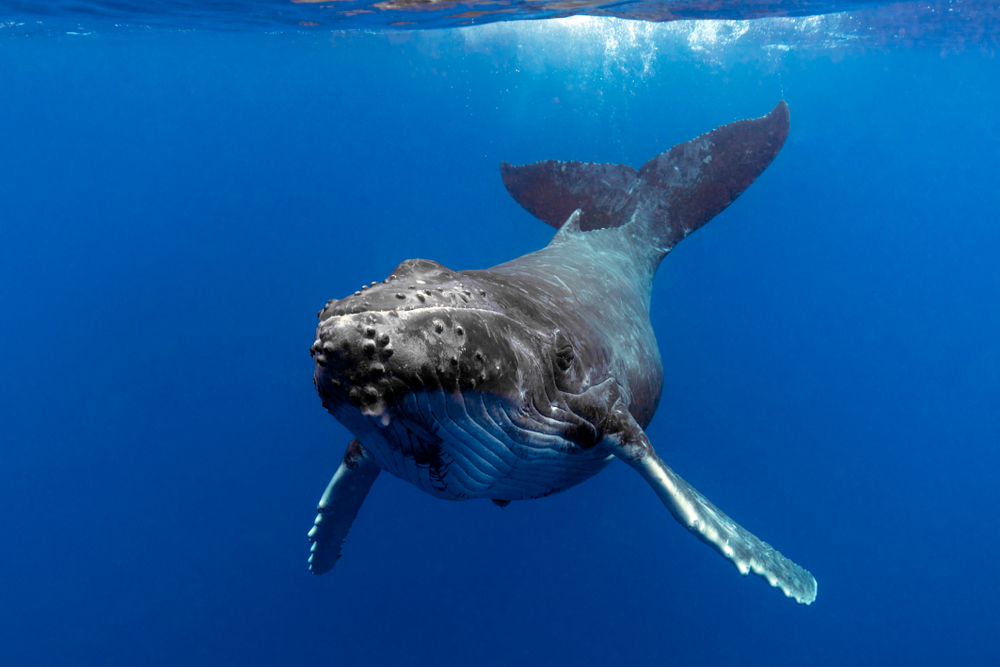Whether artificial intelligence (AI) will help or destroy humanity is yet to be decided. But it could help us talk to whales.
Obligatory Finding Nemo clip:
Seriously. Scientists around the world are gathering data to create a large language model (LLM) of whale communication. The LLM would be the basis for an AI that could (in theory) tell us whether a whale is saying, “Hello, friend!” or “Please leave me alone!” or something else entirely.
Generative AI tools such as Bard and ChatGPT use LLMs. In very simplistic terms, LLMs “learn” which words go together and in what order by digesting massive amounts of content in an existing language. For example, “He likes his coffee with milk and two sugars,” teaches an LLM that the words “coffee,” “milk” and “sugar” are often used together.
In other words, LLMs don’t learn a new language by being taught grammar rules. Nor do they learn a new language by first knowing English and then picking up Spanish by digesting a lot of translated content.
Scientists hope an LLM can be developed for whale communication.
Computers can also process sounds that are inaudible to human ears. Fun fact: humans can hear sounds ranging from 20-20,000 Hz whereas dolphins can detect clicks, squeaks and other noises up to 160,000Hz.
Artificial intelligence is also much better at detecting nuances.
. Our brains aren’t able to distinguish when one whale is speaking versus another, but (in theory) a computer could train itself to “hear” different voices.Two major nonprofit organizations are applying AI tools to animal communication: Project CETI (Cetacean Translation Initiative) and Earth Species Project.
Project CETI received funding from the TED Audacious Prize and includes a team of experts from around the world. Currently, the organization is focused on sperm whale communication. They’re collecting communication data from sperm whales in Dominica. As mentioned above, heaps of data are required to create an LLM.
The scientists and conservationists at Earth Species Project are using AI tools to decode, label and even reply to a variety of animal vocalizations, including beluga whales, chiff-chaffs, crows and humpbacks. ESP is also a co-founder of the Interspecies Internet community.
 Photo by Jay Clue, Dive Ninja Expeditions. Taken on special permit.
Photo by Jay Clue, Dive Ninja Expeditions. Taken on special permit.
Unfortunately, we don’t know what we don’t know.
First, there’s the problem of context. Whale calls can be heard across great distances — up to 6000 km/3700 miles. Knowing who said what and under what circumstances can be critical to the underlying meaning.
For example, if you ask someone, “How are you feeling?” The response, “Wonderful” means one thing when said by a scuba diver coming out of the ocean and the exact opposite when said by someone with a runny nose lying in bed.
Echolocation is another variable. All toothed whales have an organ called a melon which uses sound to create a 3D view of the world beyond what they can see with their eyes. If the AI learns a certain click means “food,” how will we know if a whale saying “food” over and over means the animal is hungry versus directing their pod to a bait ball?
If scientists develop an LLM for humpback whale communication — then what?
For one thing, having an AI that can understand whale doesn’t mean it can translate what it knows into a human language. As mentioned above, whales use sound in ways we do not. It’s possible the AI could learn to speak whale, but not to us.
We could still make use of a computer program that could flag whale conversations, even if we don’t know what they mean. An AI program that can detect ill or injured orcas is already helping conservationists in the Salish Sea.
If an AI could learn the sounds cetaceans make prior to a stranding event, preventative measures might be developed. At the very least, the local community would have more time to prepare and perhaps rescue the animals. A similar system is already in effect in the rainforests of northern Brazil. Using recycled Android devices hidden in trees, Google’s AI technology listens for the sound of illegal logging, such as chainsaws or logging trucks. When illegal activity is detected, a real-time alert goes to the Tembé rangers who can either intervene or report the loggers to the authorities.

Vessel strikes are a serious threat to many whale species and currently underreported. Imagine what would happen if we could “hear” a whale or its pod mates calling out after a collision. Though it breaks my heart to even consider what that report would sound like, the recording and location data could bolster efforts to protect whales and other cetaceans.
If we had an AI that could fully translate words or phrases…the potential is mind-boggling. We’d learn so much more about the lives of whales, their social behavior and what goes on in the ocean depths. Personally, I’d love to listen to a TED talk delivered by a whale.
But there are also some potentially dangerous consequences of being able to talk to whales.
What if the AI mistranslates? The “We come in peace” scene from Mars Attacks! immediately comes to mind.
Humans can be selfish. Once the technology is out there, what’s to stop an unscrupulous commercial fishing company from eavesdropping on whales to find untapped fishing grounds?
Maybe we should just leave whales alone. If all the crows in my neighborhood wanted to chat with me every time I left the house — I’d spend more time indoors. Joking aside, humans have interfered with whales’ lives enough. Maybe we shouldn’t assume they’d even want to talk to us.
Will we ever have the ability to talk to whales? Only time will tell. Until then, one thing is for sure: whales need our support. They play a critical role in our ecosystem and many are critically endangered.

I’ve been lucky enough to scuba dive with humpback whales twice and even look one in the eye. No words were exchanged, but I like to think we acknowledged each other. Maybe something like:
ME: Wow. You’re beautiful and amazing!
WHALE: You are small but very noisy!
Full disclosure: my scuba diving experiences were lucky accidents. I happened to be underwater when the whales swam by. But if the idea of seeing a whale underwater gives you life, check out these where to swim with whales articles written by PADI® Divers.
Share This
